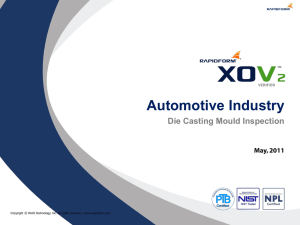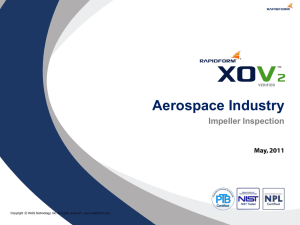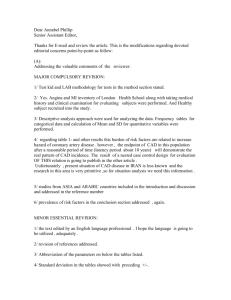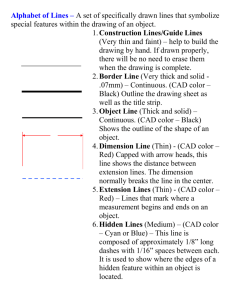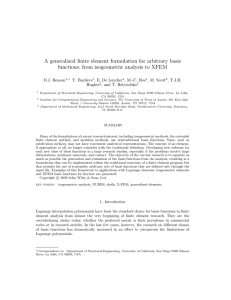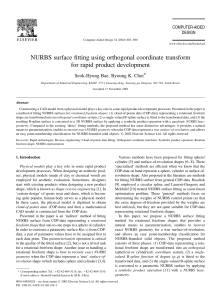IE301 Lab report form_Experiment 4
advertisement
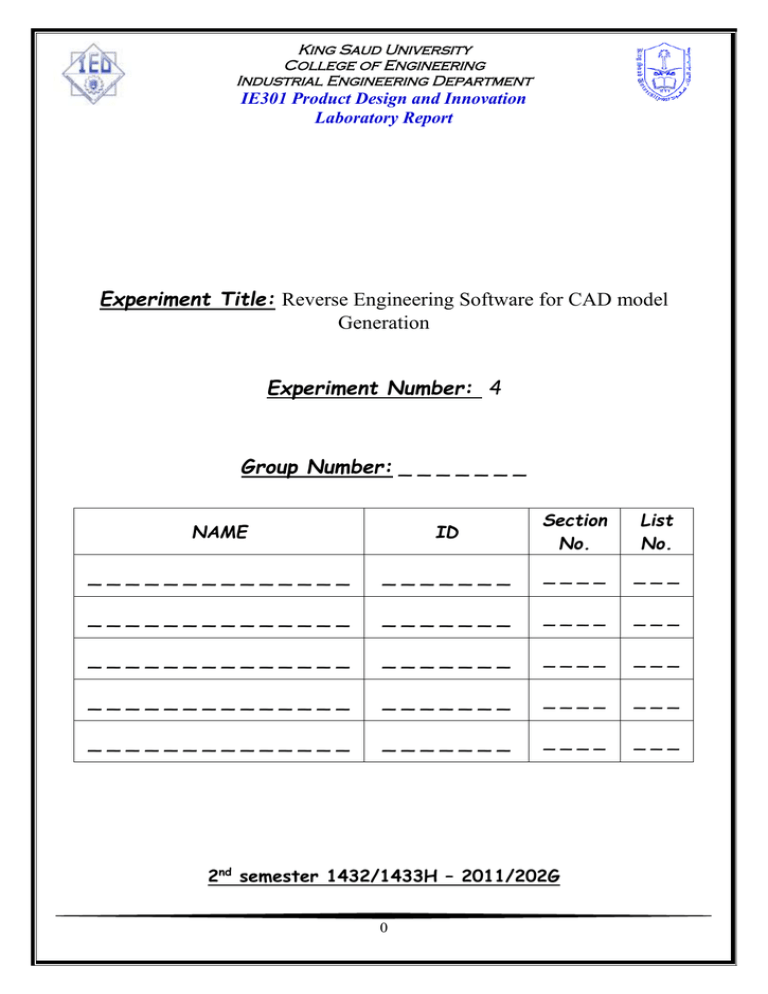
King Saud University College of Engineering Industrial Engineering Department IE301 Product Design and Innovation Laboratory Report Experiment Title: Reverse Engineering Software for CAD model Generation Experiment Number: 4 Group Number: _ _ _ _ _ _ _ NAME ID Section No. List No. ______________ _______ ____ ___ ______________ _______ ____ ___ ______________ _______ ____ ___ ______________ _______ ____ ___ ______________ _______ ____ ___ 2nd semester 1432/1433H – 2011/202G 0 King Saud University College of Engineering Industrial Engineering Department IE301 Product Design and Innovation Laboratory Report 1) Objective of Experiment 1) Understand the concept of Reverse Engineering (RE) Software Import the scanned data. Clean the data for surface reconstruction. Generation of CAD models. 2) Theoretical review CAD Model generation using RE Concepts: Reverse Engineering (RE) provides a solution to such manufacturing problems. However, a major problem with reverse engineering technology is the inefficient and uneconomical surface reconstruction (SR) process with huge amounts of acquired surface points of existing freeform products. Therefore, reconstruction of freeform surfaces is a vital step in RE. In data acquisition phase enormous quantities of 3D data are produced, typically in the form of large unstructured point clouds which may contain outliers, noise, and non-uniformities in thickness and spacing, due to acquisition errors or misalignment of multiple scans. There are always points that do not belong to the volume of interest in acquired point cloud data. Sometimes several point clouds of the same object are collected from different angles or positions each having its own coordinate frame. Hence it is necessary to perform further processing on the acquired data. Typical editing operations such as cropping, merging, denoising, elimination of outlier points, thinning, orientation, and redistribution of the input points are needed to be done. These operations are called pre-processing of acquired point cloud data. In reverse engineering, surface reconstruction is the most difficult and important process because the reconstructed CAD representation can be used for reproduction, assembly analysis, quality control and design improvement. So, the process of reverse engineering is just a much more specific process in relation to the general engineering. Surface reconstruction in RE is defined as a step to get the true shape of the object being reversed. 1 King Saud University College of Engineering Industrial Engineering Department IE301 Product Design and Innovation Laboratory Report In this step, 3D surfaces (NURBS) are fitted for reconstructed triangular model. Non uniform Rational B-splines (NURBS) are mathematical models usually used in computer graphics, especially in product design and CAD (Computer-aided Design) models [1]. NURBS surfaces are generated from the triangulated model instead of creating it directly from the point cloud. The conversion from a triangulated model to the NURBS surface model requires multiple steps. First, the triangulated model must be parameterizated (conversion to patches). Then the NURBS fitting algorithm can be applied to the parameterized point clouds. At the end, this 3D surface model is exported as a common file format for developing 3D CAD model.ant to export the figure as a common file format for further processing. Raw Point Cloud Data Cleaned Point Cloud Data NURBS Triangulated Model CAD Model 2 King Saud University College of Engineering Industrial Engineering Department IE301 Product Design and Innovation Laboratory Report 3) Equipment a) Type: Software b) Description: Mainly three software are used during the process: 1. Vxelements: To acquire data points. 2. Geomagic: To clean and process data points. 3. CATIA: To process the CAD model. A computer with good configuration is used for processing of data. 3 King Saud University College of Engineering Industrial Engineering Department IE301 Product Design and Innovation Laboratory Report 4) Experimental procedures The steps are as follows: 1. Data is acquired either in point cloud form or directly as triangulated model. 2. Initial cleaning in Vxelements software. 3. Export the raw data to Geomagics software. 4. Clean the noise from the data. 5. Merge the surfaces if needed. 6. Fill the holes in the surfaces. 7. Make the NURBS surfaces. 8. Make the final surface model. 9. Export the model to CAD software such as CATIA. 10. Process the CAD model for finishing touch. 4 King Saud University College of Engineering Industrial Engineering Department IE301 Product Design and Innovation Laboratory Report 5) Result 6) Discussion 7) Conclusions 5 King Saud University College of Engineering Industrial Engineering Department IE301 Product Design and Innovation Laboratory Report Appendix Reference 1. L. A. Piegl, W. Tiller (1997). “The Nurbs Book”. Springer. 6


